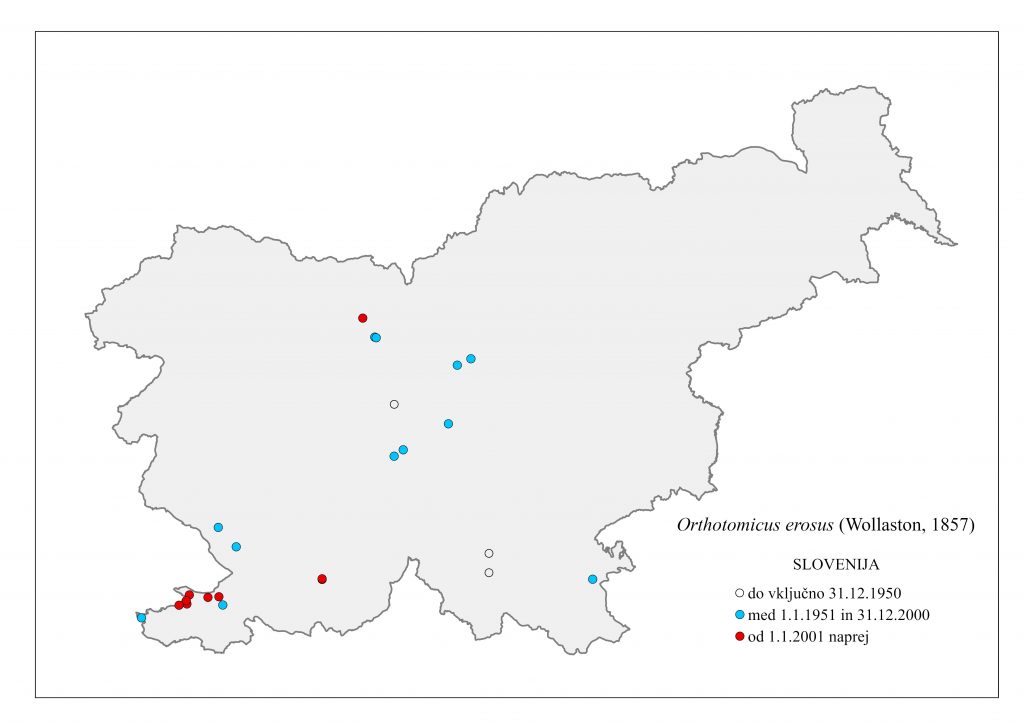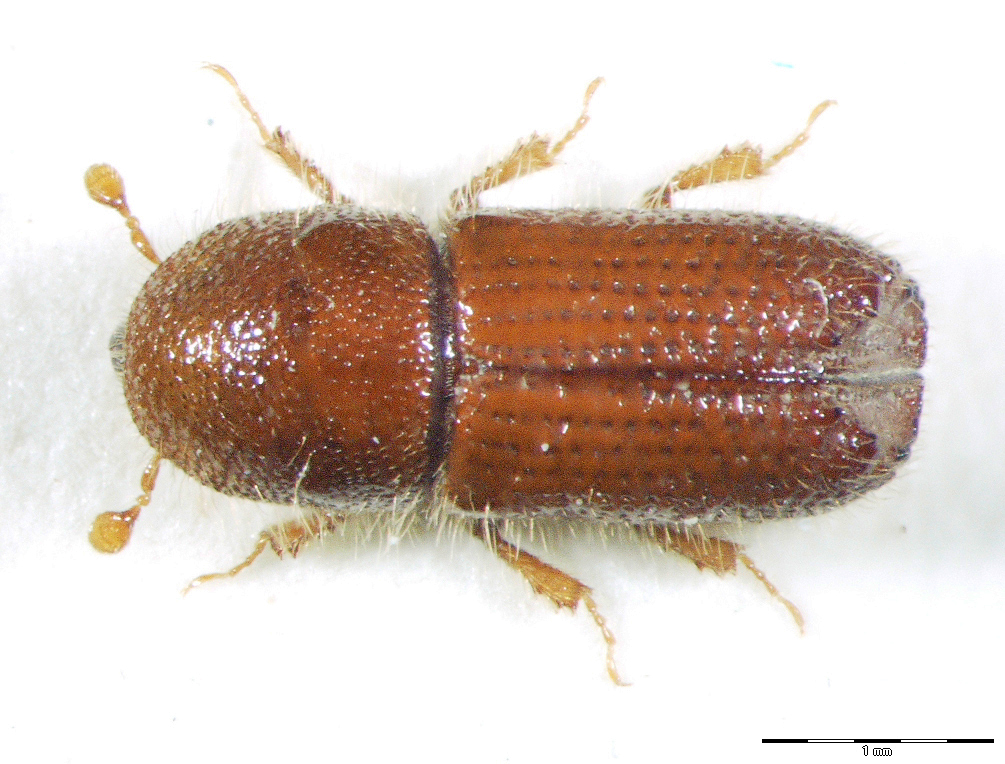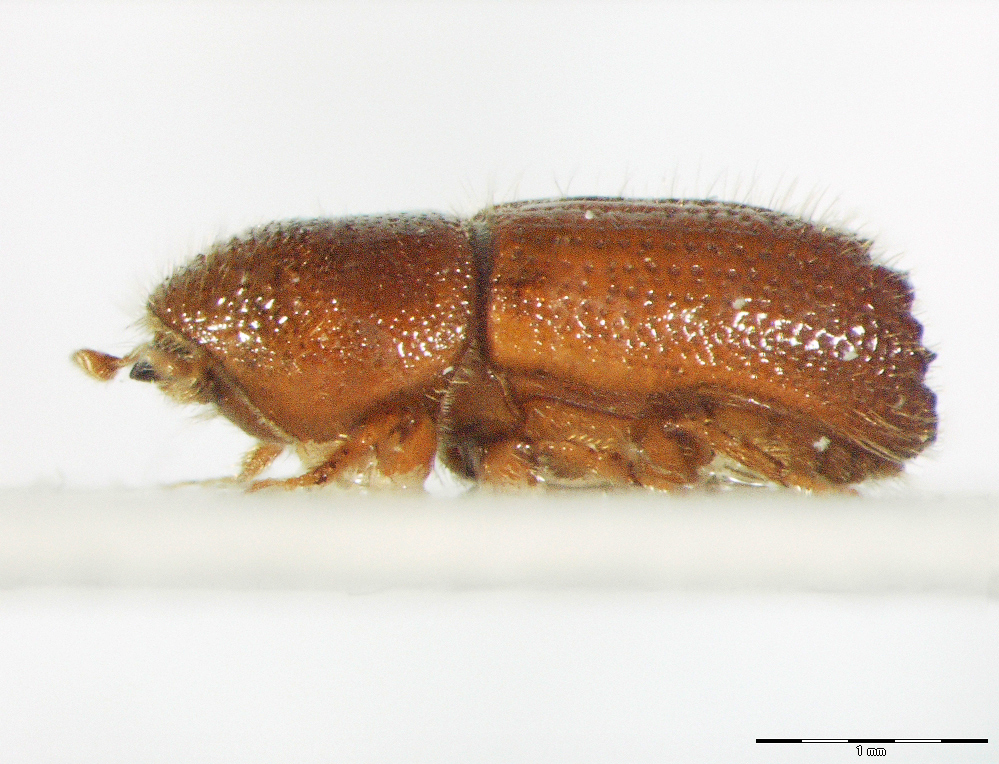29.01. Orthotomicus erosus (Wollaston, 1857)
Presence
E: AZ AU BU CR CT FR GB GR IT MA MC NL PL PT SL SP ST SZ UK YU
N: AG EG LB MO MR TU
A: AF ANH FUJ GUA GUI GUX HEN HUB HUN IN IS JIA JIX JO LIA SCH SHA SHN SHX SY TR UZ YUN ZHE »Korea«
AFR
NAR
Figure 123: Orthotomicus erosus, dorsal, lateral (Photo: Maja Jurc)
Older catalogs and keys – citations of name
Grüne 1979: Orthotomicus erosus Wollaston, 1857; Freude, Harde, Lohse 1981: (Ips) erosus (Wollaston); Titovšek 1988: Orthotomicus erosus (Wollaston); Pfeffer & Knížek 1993: O. erosus (Wollaston, 1857); Pfeffer 1995: O. erosus (Wollaston, 1857).

Figure 124: Orthotomicus erosus, distribution map according to historical and recent data
Ecology and presence in Slovenia
The species is found in central, southern and south-eastern Europe, the Crimea, the Caucasus, Asia Minor, North Africa, the Afrotropics and the Nearctic. In Slovenia, it is relatively common in the western part of the country, but there are no records in Štajerska, Koroška and Prekmurje (Fugure 124). The hosts are mainly continental and Mediterranean pine species: Pinus halepensis, P. canariensis, P. pinaster, P. pinea and Pinus spp.. Rarely inhabits Abies pinsapo, A. alba, A. nordmanniana, Cedrus atlantica in Picea spp.. In Slovene territory, the species has been found on P. sylvestris, P. nigra, P. pinea and P. halepensis. It develops two generations per year, the first swarming in April and May, the second in July. It builds long, irregular, often longitudinally oriented, star-shaped tunnel systems. Adults are 2.7-3.5 mm long. The elytras apex is very steep, almost vertical, densely punctate, not grooved. Sexual dimorphism is strongly marked, with the denticles in the male being more strongly developed at the elytras apex (Figure 123). Secondary species, very common in Europe in freshly felled trees, in logs that have not been debarked or in trees attacked by more aggressive bark beetles or decaying due to other biotic or abiotic factors.


